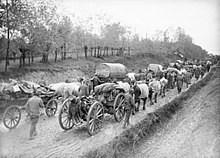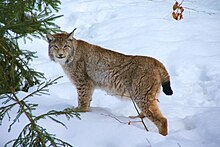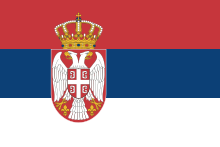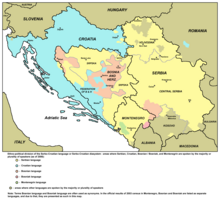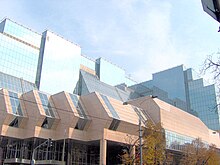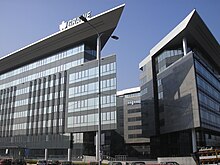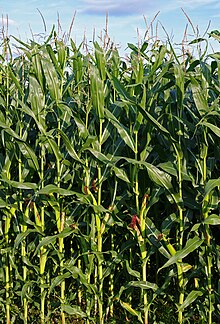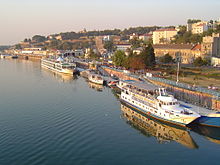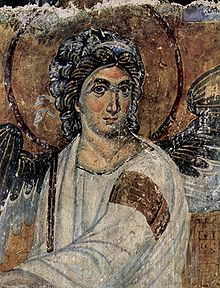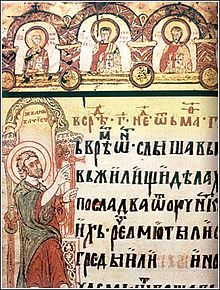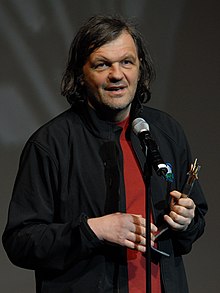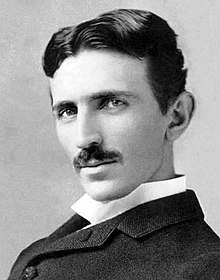Serbian
Serbia(in Serbian, Срти audienceа, Srbija, ![]() [sř]bija] (?·i)), officially Republic of Serbia (
[sř]bija] (?·i)), officially Republic of Serbia (![]() Republika Srbija (?·i)), it is a sovereign country, constituted in a social and democratic state of law and whose form of government is the parliamentary republic. Located on the Balkan peninsula, in the southeast of Europe, landlocked, according to its constitution borders Hungary to the north; with Romania and Bulgaria to the east; with North Macedonia and Albania to the south; and with Bosnia and Herzegovina, Croatia and Montenegro to the west. Its most populated capital and city is Belgrade.
Republika Srbija (?·i)), it is a sovereign country, constituted in a social and democratic state of law and whose form of government is the parliamentary republic. Located on the Balkan peninsula, in the southeast of Europe, landlocked, according to its constitution borders Hungary to the north; with Romania and Bulgaria to the east; with North Macedonia and Albania to the south; and with Bosnia and Herzegovina, Croatia and Montenegro to the west. Its most populated capital and city is Belgrade.
Serbia formed a medieval kingdom that evolved into an empire that reached its greatest extent in the 14th century. In the 15th century Serbian territory was conquered by the Ottoman Empire, to which it belonged until the XIX, when Serbia regained its independence and expanded its territory. After the end of the First World War Serbia formed the Kingdom of Yugoslavia together with other Balkan territories. After World War II it became part of the Socialist Federal Republic of Yugoslavia, which ended up disintegrating after a series of wars in the 1990s. Serbia finally became an independent state again in 2006, after the dissolution of the union of Serbia with Montenegro.
On February 17, 2008, the interim parliament of Kosovo, a southern Serb province with an ethnic Albanian majority, unilaterally declared its independence from Serbia. This independence is not recognized by the Serbian government, which considers Kosovo its own autonomous province — officially called the Autonomous Province of Kosovo and Metojia — under the administration of the United Nations.
Serbia is a member of the United Nations, the Organization for Security and Cooperation in Europe and the Council of Europe, whose presidency it held in 2007. It is one of the potential candidates for future membership of the European Union and a country militarily neutral.
Etymology
The name Serbia (Srbija, or "land of the Serbs") comes from its oldest Slavic inhabitants, the Serbs (srbi), whose origins It is uncertain. According to the Nestor Chronicle, History of the First East Slavic State, Serbs are among the first five Slavic peoples who were known by their modern name.
The Serbs are believed to be first mentioned by Claudius Ptolemy in the II century, in his Geographia (book 5, 9.21), to designate the Serboi, a tribe that inhabited Sarmatia, probably north of the Caucasus, near the lower Volga, or by the Black Sea. Ptolemy's contemporaries such as Tacitus and Pliny the Elder (Naturalis Historia, VI) also refer to the Serboi in the vicinity of the Caucasus.
One of the most accepted hypotheses is that the Sorbs or Sorbs (Serbja in Upper Sorbian) who inhabit Lusatia share ancestry with the Serbs (in Serbian language, Sorbian is said Lužički Srbi, or Lusatian Serb). font-variant:small-caps;text-transform:lowercase">V left the Caucasus for Europe are the common ancestors of Serbs and Sorbs, who divided into two groups. One of the groups (the ancestors of the Serbs), known as the White Serbs (beli srbi), migrated to the Balkans around 610-626 led by the Unknown Archon. For his assistance to Emperor Heraclius in his struggles against the Avars, this It allowed them to settle in an area of the province of Macedonia, close to the current Greek city of Servia. Subsequently, its expansion to the north took place.
History
Prehistory and Roman times
The Vinča and Starčevo cultures were the first Neolithic civilizations in the area now occupied by Serbia, between the vii and the iii millennium BC. C. The most important archaeological site from this time is Lepenski Vir. The oldest paleo-Balkan civilizations that inhabited the area before the Roman conquest, carried out in the I century B.C. C., were the Illyrians, Thracians, Dacians and Celts. The Celts built many fortifications, and are credited with founding many modern cities in Serbia, such as Kalemegdan (Singidunum, Belgrade). IV a. C., reaching the northernmost point of the empire of Alexander the Great. Contemporary Serbia comprises (in whole or in part) the classical provinces of Moesia, Pannonia, Praevalitana, Dalmatia, Dacia and Macedonia. The northern city of Sirmium was one of the capitals of the Roman Empire, during the Tetrarchy. Important remains have also been found in Viminacium. At least seventeen Roman emperors were born in the region now occupied by Serbia.
Medieval Kingdoms and Serbian Empire
In 395, the Eastern Roman Empire, which included the Balkan Peninsula, became the Byzantine Empire. Between the year 500 and 700 the first Slavs began to arrive, coming from the north of the Carpathians, towards the region between the Danube and the Adriatic Sea. After helping the Byzantines against invasion attempts by the Avars, and led by the Unknown Archon, the first proto-Serbs, from Sorabia, received permission from Emperor Heraclius to settle in the province of Macedonia, to later migrate north.
Different tribes that have inhabited the area since the early VII century, united in 845 to form Rascia, a Medieval state within the Byzantine Empire, and formed by present-day southeastern Serbia, Kosovo, and part of Montenegro. Its final Christianization took place between 867 and 869, when the Byzantine Emperor Basil I sent priests, after the Knez Mutimir recognized the Byzantine suzerainty. Throughout the 11th century, the great župan of Rascia, Stefan Nemanja, annexed Zeta, Doclea and adjacent territories to form the first great Serbian kingdom. His successors, especially Stefan II Nemanjić, Stefan Dragutin, Stefan Uroš II Milutin and Stefan Uroš III Dečanski further expanded their territory.
In 1346, Tsar Stefan Uroš IV Dušan, son of Stefan Uroš III, proclaimed the Serbian Empire. During his rule, Serbia reached its territorial high point, becoming one of the largest states in Europe. Dušan was succeeded as emperor by his son Stefan Uroš V who, due to his youth and incompetence to maintain a dominance over the created empire, by his father, caused its fragmentation into a conglomerate of principalities. Stefan died childless, in December 1371, after much of the Serbian nobility was destroyed by the emerging Ottoman Empire at the Battle of Maritza earlier that year. The nobleman Lazar Hrebeljanović assumed leadership of the Serbian kingdom, and in 1389 he formed a large army with all the Serbian nobility to stop the advance of the Ottomans, but they were defeated at the Battle of Kosovo. With the fall of Belgrade in 1521, the entire empire came under Ottoman rule, with the Despotate being of Serbia, which fell in 1459, the last bastion of resistance.
Ottoman Period and Principality
The period of Ottoman rule meant great repression for the Serbs, who were also forced to convert to Islam, resulting in a large exodus of population to the north. Much of it fled to the Holy Roman Empire, where Emperor Leopold I welcomed a good part of them in present-day Vojvodina. After the Austro-Ottoman war of 1716-1718, this area managed to gain independence from the Ottomans, as a kingdom under the sovereignty of the Habsburgs, but they reconquered it in 1739, after the war of 1736-1739.
Serb discontent with Ottoman rule led to the First Serbian Uprising of 1804, when Đorđe Petrović, Karađorđe, led a revolt that was put down in 1813, bringing extensive repression.
In 1815 the Second Serbian Uprising broke out, led by Prince Miloš Obrenović. Although the Turks put down the rebellion in 1817, Serbia gained some autonomy under Ottoman rule, with Obrenović in power as prince and absolute ruler. Thus the Principality of Serbia was born. The sultan's decrees of 1830 and 1833 extended his rights over a wider territory, and made it possible to establish a patriarchate of the Serbian Orthodox Church in Belgrade, independent of the Patriarchate of Constantinople. Russia's status as guarantor of Serbia's autonomy was also important.
Following new clashes between the Ottoman army and groups of civilians in Belgrade in 1862, and under pressure from the great powers, in 1867 the last Ottoman soldiers left the Principality. By enacting a new constitution, Serbian diplomats confirmed the country's de facto independence. Formal independence was internationally recognized at the 1878 Congress of Berlin, which formally ended the Russo-Turkish War. This treaty, however, prohibited the union of Serbia with the Principality of Montenegro, and placed the Ottoman province of Bosnia and Herzegovina under the administration of the Austro-Hungarian Empire.
Kingdom of Serbia
The Vojvodina Serbs, under the jurisdiction of the Austrian Empire, participated in the 1848 revolts against the Habsburgs, establishing the autonomous region of the Serbian Voivodeship and Banat of Timişoara. Its autonomy was abolished in 1860, when it became part of the Kingdom of Hungary.
On March 23, 1882, the Serbian prince, Milan IV Obrenović, proclaimed the Kingdom of Serbia, and he was its first monarch under the name of Milan I. In 1903, the Royal House of Karađorđević (descendants of the revolutionary leader Karađorđe) came to power, after the assassination of King Alexander I in Belgrade by a group of conspirators who stormed the palace. His successor, Pedro I, allied with Bulgaria, Montenegro and Greece (forming the Balkan League) to face the Ottoman Empire in the First Balkan War (1912-1913), and later (allied with Turks, Montenegrins, Romanians and Greeks) against Bulgaria in the Second Balkan War. These culminated in the treaties of London and Bucharest in 1913, whereby the Kingdom of Serbia tripled its territory thanks to the allocation of part of Macedonia, Kosovo, and parts of Serbia itself.
World War I
On June 28, 1914, Archduke Franz Ferdinand of Austria and his wife Sofia Chotek were assassinated in Sarajevo, then part of the Bosnian land within the Austro-Hungarian Empire. The perpetrator of the assassination was Gavrilo Princip, a member of the Young Bosnia revolutionary group, an organization that has usually been linked to Serbian nationalism and the Unification or Death organization. This fact led Austria-Hungary to declare war on the Kingdom of Serbia. Russia came to the defense of Serbia and began mobilizing its troops, prompting the Austro-Hungarians and their Imperial German allies to declare war on Russia as well on August 1, 1914. Austria-Hungary's retaliation against Serbia triggered a series of military alliances (the Triple Entente and the Triple Alliance) that set off a chain reaction of declarations of war across the continent, leading within a month to the outbreak of World War I. The Ottoman Empire and later the Kingdom of Bulgaria sided with the Austro-Hungarian side, while Russia and Serbia received support from France and the United Kingdom.
On August 12, Austrian troops crossed the Drina and began the invasion of Serbia. The Serbian army achieved several important victories against Austria-Hungary early in the war, such as the Battle of Cer and the Battle of Kolubara, constituting the first Allied victories against the Central Powers of the entire conflict. Despite initial success the Serbs were ultimately defeated by the joint forces of the German Empire, Austria-Hungary and Bulgaria, and in November 1915 the bulk of the Serbian army and thousands of civilians withdrew towards Greece and through Albania to Corfu. They then regrouped in Thessaloniki and joined a multinational force with the French, British, Greeks and Italians and returned to the Macedonian front, where in September 1918 they carried out the great Allied offensive that led to Bulgaria's capitulation and liberation. of Serbia. Despite being victorious in the war, Serbia suffered the highest mortality rate of the conflict, between 17% and 27% of its population.
Interwar Period
After the war, the former Austro-Hungarian provinces of Croatia-Slavonia, Carniola, and Bosnia and Herzegovina were united in the short-lived State of Slovenes, Croats, and Serbs. Despite the misgivings of some European powers, this state joined Serbia and Montenegro in the Declaration of Corfu to proclaim, on December 1, 1918, a parliamentary monarchy, the Kingdom of Serbs, Croats and Slovenes. form part of the new state Vojvodina on the Hungarian side of the empire and part of Styria and most of Dalmatia on the Austrian side.
Soon this geographical expansion collided with the interests of Italy, which claimed more areas of the Dalmatian coast, while the new kingdom demanded the Istrian peninsula. On the other hand, the rivalry between Serbs and Croats intensified, and on 20 On June 1928, in full parliament, a Montenegrin deputy shot the Croatian politician Stjepan Radić, who died days later. abolish the 1920 Constitution and proclaim royal dictatorship. On October 3, 1929, the Kingdom of Serbs, Croats and Slovenes was renamed the Kingdom of Yugoslavia.
The interwar period did not bring tranquility to the new state. Ethnic tensions between Serbs and Croats were on the rise, and on 9 October 1934 King Alexander I was assassinated in Marseilles during an official visit to France, by a member of the Macedonian Internal Revolutionary Organization. Also the new regent, Prince Pablo Karađorđević forged friendly relations with the emerging totalitarian states of Nazi Germany and Fascist Italy.
World War II
The invasion of Poland by the German army, in September 1939, was the trigger for the outbreak of World War II. Fearing an invasion by Germany, Prince Paul signed the Tripartite Pact with the Axis powers on March 25, 1941, sparking riots in Serbia. On March 27, Paul was overthrown in a coup supported by the Allied Powers, and replaced by King Peter II Karađorđević, the legitimate successor to the throne.
Although the new government did not formally declare its enmity with the Axis, on April 6, 1941 Adolf Hitler launched Operation Punishment, ordering the invasion of Yugoslavia. On the same day, the Luftwaffe bombarded Belgrade, and on April 17 the country's unconditional surrender was signed. After the invasion, the Kingdom of Yugoslavia was dissolved: in Serbia a collaborationist military government was established, managed by General Milan Nedić; other areas were divided among the Axis countries, and with Croatia and Bosnia the Independent State of Croatia was created, under the government of Ante Pavelić, head of the Croatian fascist party Ustacha.
The resistance to the occupation was organized on two fronts: on the one hand, the communist-inspired partisan movement led by Josip Broz Tito, and on the other, the pro-Serbian monarchist-oriented Chetniks, whose commander was Draža Mihajlović. While these forces were facing the invaders, in Croatia the systematic extermination of Serbs, Jews and Gypsies began, carried out by the ustashi regime, which installed several concentration camps, the most notable being that of Jasenovac. According to estimates, between 500,000 and 700,000 Serbs were killed.
In early 1944, the partisans became the main resistance force in Bosnia, Montenegro, Slovenia and Herzegovina. In Serbia, however, especially in rural areas, the population sympathized more with the chetniks. In September 1944, the Red Army's advance almost reached Yugoslavia, so Tito traveled to Moscow and coordinated with Stalin joint action against the Axis forces. On October 20, 1944, Partisan troops and the Red Army took Belgrade in a joint operation, and by the end of the year, the eastern half of Yugoslavia had been completely liberated. In April 1945, Sarajevo was also liberated, and Croatia and Slovenia the following month. Before undertaking the pacification of the country, the partisans also had to face the Chetniks, which triggered a civil conflict between both forces.
Serbia in Socialist Yugoslavia
After the war, Tito and the Communist Party of Yugoslavia began the process of governing the Federal Democratic Republic of Yugoslavia; a new electoral law was approved and elections were called. These were held in November 1945, with a single list, called the Popular Front and dominated by the communists, which obtained more than 90% of the votes. The constitutional assembly proclaimed the abolition of the monarchy, and a multi-national one-party government was established. On January 31, 1946, the Socialist Federal Republic of Yugoslavia was established, consisting of six socialist republics: Slovenia, Croatia, Bosnia and Herzegovina, Macedonia, Montenegro, and Serbia.
The state began with a notable dominance of the Socialist Republic of Serbia over federal politics, centralized at first in its capital, Belgrade. Rapid economic socialization and the Five-Year Plans brought about significant industrial development. The massive arrival of migrants, who provided the workforce, from impoverished Albania (especially to nearby Kosovo) and its extraordinary population explosion caused the number of Albanians in Kosovo doubled since the end of World War II, reaching 916,168 in the 1971 Yugoslav census, making it the fastest growing region in Yugoslavia and Europe.
The proliferation in the different republics of nationalist groups that gained strength and threatened the political stability of the federation, forced a decentralization of power. Thus, in 1974, it was agreed to create the autonomous provinces of Kosovo and Metohija and Vojvodina within Serbia, to satisfy the claims of the different ethnic groups that comprised them.
Tito, who had kept Yugoslavia under an ironclad multi-ethnic polity since 1945, died in 1980, bringing with it a rise in nationalist movements, exacerbated by the pressing Yugoslav economic crisis. In the 1980s Kosovo Albanians they intensified their demands that the province obtain the status of a republic, as a first step towards a possible self-determination. Ethnic tensions between Serbs and Albanians in Kosovo escalated into violence and would play a major role in the collapse of the former Yugoslavia.
Dissolution of Yugoslavia. Yugoslav Wars
In 1989, Slobodan Milošević, of the League of Communists of Serbia, who had ousted all his opponents through a policy of intrigue and intimidation, came to power in Serbia. One of his first measures was the abolition of the autonomy of the Serbian provinces of Kosovo and Vojvodina. On June 28, 1989, in full nationalist effervescence, Milošević appeared at Kosovo Polje, the scene of the Battle of Kosovo on the 600th anniversary of the defeat against the Turks, where, before a crowd of between 500,000 and 1,000,000 of Serbs, he delivered the famous Gazimestan speech, an exaltation of Serbian ideals that had serious consequences.
The wars that led to the dissolution of Yugoslavia originated on June 27, 1991, when the Slovenian War of Independence began, in which the Yugoslav People's Army was surprised. Slovenian independence did not affect other nationalities, as it was ethnically homogeneous, but it lit the secessionist fuse in the other republics. This short conflict was not repeated in the bloody Croatian War of Independence and the Bosnian War, which would last until 1995, leaving hundreds of thousands of deaths and millions of refugees, and where large Serb communities caused and also suffered serious acts of ethnic cleansing and genocide.
In 1992, the governments of Serbia and Montenegro agreed to create a new federation under the name of the Federal Republic of Yugoslavia, which abandoned its former official name and the communist system, adopting representative democracy and the free market system. However, some of the other former Yugoslav republics accused Serbia of its involvement in the Yugoslav wars (in 2007 Serbia was acquitted of a Bosnian indictment, as the International Court of Justice interpreted that "it could not be held responsible or complicit to the Serbian state"). On 23 July 1997, Milošević was proclaimed President of the Federal Republic of Yugoslavia.
The escalation of ethnic violence in the province of Kosovo became unstoppable, and reached its peak in 1998, when the confrontations between the federal army and the Albanian guerrilla Army for the Liberation of Kosovo (UÇK) reached the overtones of open warfare. Mass killings and deportations of civilians on both sides put Kosovo in the crosshairs of Western public opinion. Then, NATO intervened to stop the Kosovo War and carried out a trade blockade against the Federal Republic of Yugoslavia, forcing the Rambouillet peace talks (January 1999), which failed due to Serbia's refusal to accept the proposed conditions. NATO gave the federal authorities an ultimatum, and carried out the Bombing of Yugoslavia, which ran from March 24 to June 11, 1999. This campaign of air strikes devastated Serbian infrastructure and sank its economy, in addition to leaving a balance of three thousand civilians dead and ten thousand wounded. On June 12, the international contingent of KFOR troops in charge of pacifying the area arrived in Kosovo, which was left under the administration of the United Nations Interim Administration Mission Nations in Kosovo (MINUK).
Political transition
Since September 2000, after the federal elections and with the country in bankruptcy, opposition parties began accusing Milošević of fraud. Street protests and demonstrations across Serbia forced him to hand over power to the Democratic Opposition of Serbia, a broad coalition of reformist parties, bringing Serbia out of its international isolation. On June 28, 2001, Milošević was handed over by Serbian authorities to the International Criminal Tribunal for the former Yugoslavia, which accused him of sponsoring war crimes and crimes against humanity during the wars in Croatia, Bosnia and Kosovo. His trial began lasted until his death in The Hague in 2006.
On February 4, 2003, a new Constitution entered into force, and the name Yugoslavia was dropped, renaming the country Serbia and Montenegro (officially the State Union of Serbia and Montenegro). The Serbian Prime Minister Zoran Đinđić, responsible for the handover of Slobodan Milošević, and who had initiated a policy of openness and rapprochement with the West, was assassinated in Belgrade on March 12, 2003, in an attack instigated by the Serbian mafia, which had important links with Milošević. The successive governments of Boris Tadić, President of Serbia since 2004, brought Serbia closer to the international community and the European Union, as well as a normalization of its international relations and with other former Yugoslav republics.
On May 21, 2006, a referendum was held in Montenegro to determine whether to terminate its union with Serbia. The results showed 55.4% of voters in favor of independence, so the Montenegrin Parliament proclaimed the independence of the state, on June 3, 2006. On that day, Serbia declared itself a sovereign state, as successor of the previous one.
Kosovo's situation was complicated when, on February 17, 2008, its leaders unilaterally proclaimed their independence. The full Serbian government, led by its president Boris Tadić and its prime minister Vojislav Kostunica, announced that this was a violation of international law and that it would never recognize its independence. A group of countries recognized the new state, but others did not, so its status remained up in the air until further resolution.
The normalization of the country's international relations and its aspirations for access to the European Union were strengthened by the capture and delivery to international justice, by the Tadić government, of the two most wanted men for their role in the Yugoslav wars: Radovan Karadžić and Ratko Mladić, surrendered in 2008 and 2011 respectively, and who were hiding in Serbian territory.
Geography
Political Geography
Serbia occupies an area of 88,361 km², of which 10,887 correspond to Kosovo, which is self-governing and in dispute, so the territory under Serbian administration is 77,474 km².
The border between Serbia and Kosovo is 352 km, and as a whole its borders are: to the north 151 km with Hungary; to the south 112 km with Albania and 62 km with North Macedonia, to the east 476 km with Romania and 318 km with Bulgaria, and to the west 241 km with Croatia, 302 km with Bosnia and Herzegovina and 203 km with Montenegro.
The Danube River acts as a natural border in a large section with Romania and in another with Croatia, as well as the Sava and the Drina (east for 150 km) with Bosnia and Herzegovina.
Physical Geography
Serbia is situated at the crossroads between Central, Southern and Eastern Europe, between the Balkan Peninsula and the Pannonian Plain.
The province of Vojvodina, which occupies the northern third of the country, lies entirely within the Central European Pannonian Plain. The easternmost tip of Serbia extends into the Wallachian Plain. The northeast border of the country is determined by the Carpathian mountain range, which crosses the whole of Central Europe. The Southern Carpathians meet the Balkan Mountains in the southeast of the country, following the course of the Great Morava River, about 500 km long (partially navigable). To the south, the Balkan Mountains meet the Rhodope Mountains. The Dinaric Alps of Serbia follow, in an east-southwest direction, the course of the Drina River (350 km navigable only by small boats), overlooking the Dinaric Peaks on the opposite bank, in Bosnia and Herzegovina. The Šar Mountains of Kosovo they form the border with Albania, and are home to the country's highest peaks, Đeravica (2,656 m a.s.l.), Peskovi (2,651 m) and Bistra (2,609 m). Outside of Kosovo, the highest elevations are Midžor (2,168 m) and Dupljak (2,032 m) in the Balkans; and the Pančić (2017 m) in the Dinárides.
Although the country is landlocked, there are about 2,000 navigable km of rivers and canals, connecting Serbia with Northern and Western Europe (via the Rhine-Main-Danube Canal - Northern Sea Route); with Eastern Europe (via Tisza, Timiş, Begej, Danube and the Black Sea routes) and with Southern Europe (via the Sava River). Two of Serbia's largest cities, Belgrade and Novi Sad, are the main river ports on the Danube. (See Hydrography section)
More than a quarter of the territory of Serbia, specifically 27% is covered by forests. In 2010, according to forecasts, national parks and nature reserves will occupy 10% of the total territory of the country.
The whole of Serbia was originally part of the temperate broadleaved forest biome. According to WWF, the territory of Serbia is divided between four ecoregions:
- Mixed forest of Panonia, in the north third.
- Mixed forest of the Dináric Alps on the border with Montenegro.
- Mixed forest of the Rhodope mountains, in the southeast mountains, border with Bulgaria.
- Balkan mixed forest, in the rest of the country.
Hydrography
Serbia's rivers belong to the Black, Adriatic and Aegean Sea basins, and there are no large lakes in its territory, although there are some reservoirs, such as the Đerdap Reservoir, and artificial lakes such as the Vlasina and Ledinci. The country is landlocked.
Hydrographically, the country is organized along two main fluvial axes. The Danube flows from the north to the east for 588 kilometers. Since the opening of the Rhine-Main-Danube canal in 1992, river traffic from Rotterdam to the Black Sea has been facilitated, implementing the importance of the Serbian area, which was endowed with a canal network of more than 600 km connecting with the Sava rivers. and Tisza. The other main axis on which the river system rests is the Morava River, which traces its basin from north to south of the country, passing through some of its main cities, which makes it strategically important.
The ten longest rivers that cross Serbian territory are the following:
| Rio | Km in Serbia | Total length (km) | No. of countries that goes through | |
|---|---|---|---|---|
| 1 | Danubio | 588 | 2783 | 9 |
| 2 | Great Morava** | 493 | 493 | 1 |
| 3 | Ibar | 250 | 272 | 2 |
| 4 | Drina | 220 | 346 | 3 |
| 5 | Sava | 206 | 945 | 4 |
| 6 | Timok | 202 | 202 | 1 |
| 7 | Tisa | 168 | 966 | 4 |
| 8 | Nišava | 151 | 218 | 2 |
| 9 | Tamiš | 118 | 359 | 2 |
| 10 | Begej | 75 | 244 | 2 |
NOTES:
- (*): Including Serbia.
- (**): Including the Western Morava (Zapadna Morava).
Climatology
The Serbian climate varies between a continental climate in the north, with cold winters, and hot, humid summers with well-distributed rainfall, and a more Adriatic climate in the south, with hot, dry summers and relatively cold autumns and winters with heavy snowfall in the interior. Differences in altitude, proximity to the Adriatic Sea and large river basins, as well as its exposure to winds mark climatic differences. Vojvodina has a typical continental climate, with air masses from northern and western Europe altering its climate profile. The south and south-west of Serbia are subject to Mediterranean influences. However, the Dinaric Alps and other mountain ranges contribute to the cooling of most hot air masses. Winters are especially harsh in the Sandžak region, due to the mountains surrounding the plateau.
The average annual air temperature in the period 1961-1990 in the area with an altitude of up to 300 m was 10.9 °C. Areas with an altitude between 300 and 500 m had an average annual temperature of around 10.0 °C, and with altitudes above 1,000 m around 6.0 °C. The lowest recorded temperature in Serbia was -39.5 °C (January 13, 1985, Karajukića Bunari, in Pešter), and the highest of 44.9 °C (July 24, 2007, Smederevska Palanka).
Protected areas
In Serbia there are 5 national parks, 10 nature reserves, 12 natural caves and an area classified as a biosphere reserve, Golija-Studenica. The national parks are:
| National Parks of Serbia | |||
| Image | Name | Location | Extension |
|---|---|---|---|
 | Fruška Gora | Sirmia | 250 km2 |
 | Kopaonik | Serbia | 120 km2 |
 | Tara | Serbia | 220 km2 |
 | Đerdap | Serbia | 640 km2 |
 | Montes Šar | Kosovo | 390 km2 |
Natural environment
Fauna and flora
- Fauna
The abundance of rivers, forests and mountainous areas make Serbia's fauna uniquely rich. Protected species found in their mountainous habitats include deer, wolf, European lynx, and common fox. Other mammals found in the country include the European hare, wild boar, chamois, and mouflon., 90 species of mammals and about 110 species of freshwater fish are present, including 14 subspecies found only in the region and another 7 that appear on the IUCN Red List. There are also 70 species of reptiles in Serbia. The Carska Bara swamp area in Vojvodina is a nature reserve declared a Ramsar Site, listed among UNESCO areas of great ecological value.
But the greatest wealth of fauna in Serbia is ornithology. The Balkan region is one of the most important bird watching locations in Europe. There are 379 cataloged species, five of them protected: the imperial eagle, the great bustard, the Madagascar wild duck, the lesser kestrel and the crex crex. Many of these birds find suitable habitat for breeding in summer in the country, while others arrive from the north in winter. Among the breeding birds, there are 103 that are considered of interest by the European Conservation Council. Serbia has a significant proportion of the European populations of birds such as the saker falcon, little bittern, purple heron, scops owl, medium bill and Syrian bill.
- Flora
Despite being a relatively small country, there are an unusually large number of species in Serbia, some of which are endemic. High mountain areas, coniferous forest, sub-Mediterranean forest, Mediterranean mountain vegetation, steppe and wooded steppe are usually considered the main habitats.
Serbia and Montenegro are home to 4,300 plant species, representing 2% of the world total, of which 400 are endemic. Among these, it is worth noting two varieties of pine, munika and molika, and one of fir, omorika, discovered in the century span style="font-variant:small-caps;text-transform:lowercase">XX. Many of the wild plants are valued for their medicinal properties. The most abundant tree species are oak, elm, maple, walnut, chestnut, ash, willow, and linden.
Environment
Environmental protection is overseen by the Environmental Protection Agency of the Republic of Serbia (SEPA), a part of the Ministry of Science and Environmental Protection. According to its data, the 1999 NATO bombings caused lasting damage to the Serbian environment, with several thousand tons of toxic chemicals being stored in factories and being dumped into the soil, atmosphere and watersheds, affecting humans and wildlife.
Recycling is still a budding activity in the country, with only 15% of its waste returned for reuse, although the Ministry of Science and Environmental Protection is working to improve the situation. In May 2002 it was founded the Serbian Agency for Energy Efficiency (SCAE), a national non-profit organization, which develops and proposes programs and measures, coordinates and stimulates activities aimed at achieving rational use and saving of energy, as well as increasing efficiency of energy use in all consumption sectors. The country is also trying to make greater use of renewable energy effective, developing a 20 MW wind farm in Belo Blato, as part of a development plan that aims to reach 300 MW.
Administrative division
Officially, the Republic of Serbia, consists of the historical region of Serbia (currently known as Central Serbia) and the autonomous provinces of Vojvodina (Аутономна Покрајина Војводина / Autonomna Pokrajina Vojvodina in Serbian, Vajdaság Autonóm Tartomány in Hungarian), to the north, and Kosovo and Metohija (Косово и Метохија / Kosovo i Metohija), to the south. It is administratively divided into 29 districts (Округ / Okrug in Serbian) and the City of Belgrade.
Of the 30 districts (including the City of Belgrade), 7 are located in Vojvodina, 18 in Central Serbia and the remaining 5 in Kosovo. This region has been outside government administration since 1999, when it was taken over by the United Nations Interim Administration Mission in Kosovo. On February 17, 2008, Kosovo declared its independence, unrecognized by Serbia, and that is in dispute in the United Nations Organization.
The districts, for their part, are divided into municipalities. In total there are 192: 108 in Central Serbia, 54 in Vojvodina and 30 in Kosovo.
Central Serbia is not an administrative division, unlike the two autonomous provinces, and does not have its own government.
Districts by province
- Serbia
| District | Province | Surface (km2) | Population (2002) | Capital |
|---|---|---|---|---|
| Bor | Serbia | 3.507 | 146.551 | Bor |
| Braničevo | Serbia | 3.865 | 200.503 | Požarevac |
| Jablanica | Serbia | 2.769 | 240.923 | Leskovac |
| Kolubara | Serbia | 2.474 | 192.204 | Valjevo |
| Mačva | Serbia | 3.268 | 329.625 | Šabac |
| Moravica | Serbia | 3.016 | 224.772 | Čačak |
| Nišava | Serbia | 2.729 | 381.757 | Niš |
| Pčinja | Serbia | 3.520 | 227.690 | Vranje |
| Pirot | Serbia | 2.761 | 105.654 | Pirot |
| Podunavlje | Serbia | 1.248 | 210.290 | Smederevo |
| Pomoravlje | Serbia | 2.641 | 227.435 | Jagodina |
| Raška | Serbia | 3.918 | 291.230 | Kraljevo |
| Rasina | Serbia | 2.668 | 259.441 | Kruševac |
| Šumadija | Serbia | 2.387 | 298.778 | Kragujevac |
| Toplication | Serbia | 2.231 | 102.075 | Prokuplje |
| Zaječar | Serbia | 3.623 | 137.561 | Zaječar |
| Zlatibor | Serbia | 6.140 | 313.396 | Užice |
| City of Belgrade | Serbia | 3.222 | 1.576.124 | Belgrade |
- Voivodine
| District | Province | Surface (km2) | Population (2002) | Capital |
|---|---|---|---|---|
| Northern Bačka | Voivodine | 1.784 | 200.140 | Subotica |
| West Bačka | Voivodine | 2.420 | 214.011 | Sombor |
| Southern Bačka | Voivodine | 4.016 | 593.666 | Novi Sad |
| Central Banking | Voivodine | 3.256 | 208.456 | Zrenjanin |
| North Banking | Voivodine | 2.329 | 165.881 | Kikinda |
| South Banking | Voivodine | 4.245 | 313.937 | Pančevo |
| Sirmia | Voivodine | 3.486 | 335.901 | Sremska Mitrovica |
- Kosovo*
| District | Province | Surface (km2) | Population (2002) | Capital |
|---|---|---|---|---|
| Kosovo (distrito)♪ | Kosovo | 3.117 | 672.292 | Priština |
| Kosovo-Pomoravlje♪ | Kosovo | 1.412 | 217.726 | Gnjilane |
| Kosovo-Mitrovica♪ | Kosovo | 2.050 | 275.904 | Kosovska Mitrovica |
| Peć♪ | Kosovo | 2.450 | 414.187 | Peć |
| Prizren♪ | Kosovo | 1.910 | 376.085 | Prizren |
NOTE: (*) This is the official administrative division of the Republic of Serbia. The districts of the Province of Kosovo and Metohija: Kosovo, Kosovo-Pomoravlje, Kosovo-Mitrovica, Peć and Prizren are administered by the self-proclaimed Government of Kosovo, with a new administrative organization, and under international dispute. (See Administrative divisions of Kosovo.)
Source: The data corresponds to the census carried out in 2002 by the Statistical Office of the Republic of Serbia, which is the latest official one carried out to date. The next one will take place in 2010.
Politics
Symbols
- Flag
On September 30, 2006, after the dissolution of Serbia and Montenegro, the Serbian parliament decided to renounce the flag of Yugoslavia and made the flag that had represented the country during its period as the Kingdom of Serbia constitutional. it has the colors of Pan-Slavism: red at the top, blue in the middle, and white at the bottom. This flag dates from 1804, when it was used in the First Serbian Uprising against the Ottoman Empire.
- Shield
The coat of arms of the Kingdom of Serbia, with the double-headed eagle, the Serbian cross and the royal crown, was also made official. When this old shield was recovered, it was decided to keep all its elements, despite the fact that the monarchy has not been restored. The shield has two versions, both official, the one already mentioned, and another larger one with a purple royal cloak that garnish the former. The smallest is the one on the left on the Serbian flag.
- Hymn
The national anthem of Serbia according to Article 7 of the Constitution is Bože Pravde (God of Justice), which was also the anthem of the Kingdom of Serbia, written in 1872 as a theatrical composition but due to its immense popularity it became the country's anthem. It was later adopted by Serbia during its union with Montenegro in August 2004, although the federation's official anthem was Hej Sloveni.
Government
The form of government of the Republic of Serbia is, since its separation from Montenegro in 2006, the parliamentary republic. On October 30, 2006, the citizens approved a new Constitution, which had the objective of guaranteeing "the consolidation of democracy and the rule of law in Serbia". The constitution entered into force on November 10, 2006.
Executive power is held by the head of state, who is the president, and the head of government, who is the prime minister. The five-year term of president is decided by referendum, while the prime minister is chosen by the National Assembly.
In the 2012 presidential election, held on 20 May, Tomislav Nikolic of the Serbian Progressive Party emerged victorious, beating his opponent, the pro-European Boris Tadic, by more than three points. Tadić had won in the 2004 and 2008 elections, and was the architect of the country's European integration. The post of Prime Minister has been held since 2014 by Aleksandar Vučić.
Legislative power rests with the National Assembly of Serbia, which is its unicameral parliament. It is made up of 250 deputies, who are elected by referendum every four years. The prime minister also has the power to dissolve parliament and call early elections.
The political parties with the largest representation are the Progressive Party (SNS), the Socialist Party (SPS), the Radical Party (SRS), Dosta je bilo (DJB), and the Democratic Party (DS).
The electoral system is based on universal suffrage, and the age of majority is set at 18 years.
Kosovo Status
The Serbian province of Kosovo and Metohija, after a series of conflicts, was administered by the United Nations Interim Administration Mission in Kosovo (UNMIK) until, on February 17, 2008, it unilaterally proclaimed its independence. The full Serbian government, with its president Boris Tadic and its prime minister Vojislav Kostunica, announced that this was a violation of international law and that it would never recognize its independence.
However, a group of countries, led by the United States and part of the European Union, rushed to recognize the sovereignty of the new State, while others, such as Russia, China, India, Brazil, Spain and part of Latin America they expressed their intention not to recognize Kosovo as an independent state. On October 8, 2008, the United Nations General Assembly approved a resolution on the Serbian proposal to question the International Court of Justice if Kosovo's Declaration of Independence was compatible with international law. The delegations of Serbia and Kosovo presented their allegations in The Hague during the month of December 2009, and on July 22, 2010 the court reported its conclusion that the declaration of independence did not violate international law or United Nations Security Council resolution 1244.
At the end of 2009, the situation of Kosovo remains in the same conditions: it is not a state recognized by the UN and remains de jure a Serb province, although de facto The Serbian Government has no authority over the area, which is administered politically by the Government of Kosovo, and militarily by the international contingent KFOR, in charge of pacifying the territory. However, according to the UN, the situation in the area remains tense and insecure. After six months of negotiations sponsored by the EU, on April 19, 2013, the governments of Serbia and the Republic of Kosovo reached an agreement for the establishing relationships between the two.
Armed Forces
The Armed Forces are subordinate to the Ministry of Defence, and are divided into the Army, the Air Force and Training Commands. As a landlocked country, Serbia does not have a navy, although it operates a river flotilla as an independent service. Constitutionally, the commander of the Armed Forces is the President of Serbia.
The wars and crises of the 1990s have significantly impoverished the military, which has suffered from underfunding and low enlistment rates ever since. In 2006, when Serbia and Montenegro separated, the federation's armed forces numbered 65,700, while in 2009 their number had been reduced to 30,000. Military spending fell by around 5%. of GDP in the late 1990s, to a meager 2.1% in 2009. The government plans deep reforms and full professionalization, but lack of funds has slowed the process. The 6-month military service is still compulsory, but a large number of recruits accept conscientious objection, being able to serve 9 months on social benefits.
Serbia participates in the Partnership for Peace program, but for the moment it has not shown any intention of full integration into NATO, due to significant social rejection, largely derived from the bombings to which the Alliance subjected in 1999 to Yugoslavia. The country has also signed the Stability Pact for South-Eastern Europe and the Ottawa Anti-Mine Treaty, and participates in UN peacekeeping missions in the Democratic Republic of the Congo, Ivory Coast, Liberia and Chad.
International relations
Serbia is a member of major international organizations such as the UN, Council of Europe, OSCE, Interpol, World Bank, Partnership for Peace, Stability Pact for South East Europe, UNCTAD, UNESCO, UNHCR, UNIDO, UNMIL, UNOCI, World Tourism Organization, Universal Postal Union, World Confederation of Labor, World Customs Organization, World Meteorological Organization and World Health Organization.
It has also expressed its intention to join the European Union. Serbia undertook the previous step to request its membership, the Stabilization and Association Agreement (SAA) in 2007. Then, it received the veto of the Netherlands, which refused to sign, making the condition of delivery to the International Criminal Court for the ex Yugoslavia, by the Serbian authorities, of war criminals from the Yugoslav Wars who were allegedly hiding in Serbian territory. The signing of the agreement finally took place on April 29, 2008 in Brussels. The Serbian government committed to collaborate with the court, and within this framework, the capture and surrender of Stojan Župljanin and, above all, of Radovan Karadžić, took place in June 2008, one of the most wanted fugitives by international justice. Despite this collaboration, The Hague continued to demand from Belgrade the capture of Goran Hadžić and Ratko Mladić, the last fugitives from the court, who were supposed to be hiding in Serbian territory. However, in November 2009 Serbian Minister of Foreign Affairs Vuk Jeremić stated that Serbia would present its candidacy for EU membership before the end of the year, and on December 22, 2009, President Boris Tadić officially presented the country's application for membership in the union. Tadić also set a year, 2014, as the initial entry goal, although European Commissioner Olli Rehn warned that the term could be extended to ten years.
The candidacy fulfilled one of its main conditions when the Serbian president announced, on May 26, 2011, the capture of Ratko Mladić and his extradition process to The Hague. On July 20, he also complied with the capture by Goran Hadzic.
Human Rights
In terms of human rights, regarding membership of the seven bodies of the International Bill of Human Rights, which include the Human Rights Committee (HRC), Serbia has signed or ratified:
Demographics
Serbia's population data is highly variable due to recent events in the former Yugoslavia, which show an important census of the floating population made up, above all, of refugees from other former republics who moved to Serbian territory and do not appear in no census. During the Kosovo War there was an avalanche of Serb refugees (denounced by the UNHCR) who left Kosovar territory and settled in Serbia. These refugees (an estimated 200,000, although the Serbian government believes there are many more) are not listed. in any census, since the last official census was carried out in 2002, and it did not include data from Kosovo. The next one will be carried out in 2010.
According to sources, the number of displaced persons and refugees in Serbian territory ranges from 350,000 to 800,000. The Serbian Commissioner for Refugees, in collaboration with UNHCR, carried out a census according to which 63% of this it came from the Serb enclaves of Krajina and Slavonia, in Croatia, and 36% from the current Federation of Bosnia and Herzegovina. This contingent lives in refugee camps throughout the country and, in some cases, with relatives.
According to the latest census data, the population of Serbia was as follows (2002):
- Serbia: 5 466 009 inhabitants.
- Voivodine: 2 031 992 inhabitants.
- Republic of Serbia (without Kosovo): 7 498 001 inhabitants
According to data from The World Factbook published by the CIA in 2009, the data relating to Serbia and Kosovo are as follows (2009 estimates):
- Republic of Serbia (without Kosovo): 7 379 339 inhabitants
- Kosovo1 804 838 inhabitants
- Serbia + Kosovo9 184 177 inhabitants
A calculation by Brad Travel Guides gives Serbia (including Kosovo) 10,150,265 inhabitants in 2007.
By age, 15.4% of the population is between 0 and 14 years old, 67.8% between 15 and 64 and 16.8% are 65 years or older.
In addition, according to estimates, there are about 2 million Serbs in other former Yugoslav republics (1.7 million of them in Bosnia and Herzegovina). 32% of the total population of Montenegro (620,145 inhabitants) lives in they declare Serbs.
Most populated cities
According to 2002 census data, the 20 most populous cities in Serbia, excluding Kosovo, are as follows (municipality population):
Kosovo's most populous city is its capital, Pristina, with 550,000 inhabitants.
Ethnic groups
According to the 2002 census (which does not include data from Kosovo), the main ethnic groups inhabiting the territory of Serbia were the following, in number of individuals:
| Etnia | Persons |
|---|---|
| Serbs | 6 212 838 |
| Hungarian | 293 299 |
| Bosniac | 136 087 |
| Gypsies | 108 193 |
| Yugoslav | 80 721 |
| Croats | 70 602 |
| Montenegrinos | 69 049 |
Religion
Serbia is a multi-denominational state. The majority religion in the country (not including Kosovo) is Serbian Orthodox, professed by 85% of its inhabitants. Although established in 1219, the Serbian Orthodox Church was recognized in 1922 by the Ecumenical Patriarchate of Constantinople. Its highest authority is the Patriarch of Serbia, whose full title is Archbishop of Peć, Metropolitan of Belgrade and Karlovci, and Patriarch of the Serbs. The position is held, since October 2010, by Irenaeus I, who replaced the late Paul II.
Aside from the Orthodox, there are 5.5% Catholics, 1.1% Protestants, 3.2% Muslims, and 5.2% Atheists, unknown religions, and others. Slovak minorities and Vojvodina German are Protestant, while Islam is the religion of the Bosnian and Albanian minorities. In Kosovo, approximately 90% of the population are Muslims.
Language
The official language of the country is Serbian, which is spoken by 88.3% of the population. 3.8% speak Hungarian, and 1.8% Roma. In Vojvodina, Romanian, Hungarian, Slovak, Ukrainian and Croatian are co-official. These data do not include Kosovo, where Serbian and Albanian are co-official, which is spoken by 90% of the population.
Serbian is a South Slavic language, and its writing system supports both the Latin and Cyrillic alphabets. Its main dialects are štokavski and torlački, and it is official in Serbia and Bosnia and Herzegovina; an estimated 12 million people speak it. It is also spoken by minorities in Croatia, North Macedonia, Romania, Montenegro, and Hungary.
Economy
Currency
The official currency of Serbia is the Serbian dinar (ISO code: RSD), which is divided into 100 para, and was adopted in 2003 to replace the Yugoslav dinar. Its price, in February 2011, is €1 = 103.20 RSD.
The Central Bank of the country is the National Bank of Serbia, whose functions are the determination and implementation of monetary policy, the management of foreign exchange reserves, the issuance of banknotes and coins, and the maintenance of financial systems.
Since 2002, the euro has been used as the official currency in Kosovo, declared by UNMIK.
Economic data
With a PPP for 2008 estimated at 79,662 million dollars, and a per capita income of 10,792 $, the Serbian economy is considered by the World Bank to have a medium-high level. FDI (Foreign Direct Investment) in 2006 was 5.850 million dollars. FDI in 2007 fell to $4.2 billion, while real GDP per capita was forecast to reach $6,781 in 2009. The GDP growth rate showed an increase of 6.3% in 2005, and 5.8 % in 2006, reaching 7.5% in 2007 and 8.7% in 2008, making it the fastest growing economy in the region. According to Eurostat data, Serbian GDP per capita stood at 37 % of the European Union average in 2008.
At the beginning of the economic transition, in 1989, the Yugoslav government glimpsed favorable economic prospects. But economic sanctions from 1992 to 1995, as well as damage to industry during the Kosovo war, devastated the Serbian economy. Bombing damage was valued at over $30 billion, and industrial production fell by 70%. Losses from the former Yugoslavia and COMECON markets also had a fatal impact on exports.
Following the overthrow of Slobodan Milošević in October 2000, the country experienced increased economic growth and prepared to join the European Union, its most important trading partner.
The recovery of the economy still faces many problems, among which the most important are unemployment of 16-18%, the high deficit of the trade balance (exports: 8.8 billion dollars; imports: 18,300), and a considerable external debt of $26,240 million (public debt reached 37% of GDP in 2007). Government forecasts expect some important economic impulses and higher growth rates in the coming years, following in the ascending line of the last three, which averaged 6.6%.
Aside from its free trade agreement with the EU as an associate member, Serbia is the only European country outside the former Soviet Union to have free trade agreements with the Russian Federation and, more recently, Belarus as well. In addition to these favorable economic agreements, the government plans to sign important agreements with Turkey and Iran. In this way, Serbia hopes to create an export-oriented economy.
The main companies with investments in Serbia are: U.S. Steel, Philip Morris, Microsoft, Fiat Group, Coca-Cola, Lafarge, Siemens, Carlsberg and other minor ones. In the field of energy, the largest investments are made by the Russian multinationals Lukoil and Gazprom. The banking sector it has attracted investment from Banca Intesa (Italy), Crédit Agricole and Société Générale (France), HVB Bank (Germany), Erste Bank (Austria), Eurobank EFG and Piraeus Bank (Greece), and others. The biggest foreign investors are Intermarché from France, Germany's Metro Cash & Carry, the Greek Veropoulos, and Mercator, from Slovenia.
Foreign investment in the country is expected to continue to grow, thanks to its fiscal policy, aimed at favoring the establishment of foreign companies and attracting capital. Thus, in 2009, the International Monetary Fund and the World Bank agreed to grant loans of 402.5 and 34.9 million euros, respectively, to reactivate their economy. Foreign investment in Serbia was 1,596 million euros in 2008, of which the financial sector benefited greatly (47%); real estate (22.4%); transformation industry (21.4%) and commerce (15.5%). The countries that invested the most were the Netherlands, Italy, Austria, Croatia, Switzerland, Slovenia, Germany and France.
The 2007 unemployment rate was 18.8%.
Industry
Two important industrial activities in the country are related to mining and power generation. Serbia has abundant mineral resources, including coal, lead, copper, zinc, silver, and gold mines. Electricity production is based on numerous hydroelectric power plants along the Danube, Drina, Vlasina and Lim rivers, as well as thermal power plants, the main ones being located in Obrenovac, Kostolac and Obilic. In 2004, the production of electrical energy was 33.87 billion kWh. Despite this, the country continues to have a significant electricity deficit, and is forced to import a large part of the electricity it consumes. For this reason, the Government has expressed the need to build new power plants.
The food and textile industries are also important, in addition to those dedicated to metal processing and automobile manufacturing. There are also manufacturing factories for agricultural machinery, household appliances, petrochemical products, and pharmaceutical products. The agricultural industry has received an important boost with the establishment of mineral fertilizer production factories.
The main national companies are Naftna Industrija Srbije, a leader in the oil industry, and Elektroprivreda Srbije, dedicated to the production of electricity and mining.
Agriculture and livestock
The arable area of Serbia is 4,867,000 ha, very favorable for agriculture due to the type of soil and climatic conditions. The plains of Vojvodina, Kosovo, Posavina, Tamnava, Krusevac and Leskovac offer the most favorable conditions for mechanized farming and vegetable production.
According to Serbian government data, 1,305,426 people (17.3% of the total population) are engaged in agricultural or livestock work, a sector of the population that is aging rapidly. By activity, 43% of these are dedicated to raising cattle, 42% to extensive crops, 12% to fruit and wine production, and 3% to other crops.
Agricultural production is dominated by corn (6,158,000 t/y), sugar beet (2,300,000 t/y), alfalfa (1,070,000 t/y), potatoes (844,000 t/y) and sunflowers (454,000 t/y). Furthermore, Serbia produces about a third of the raspberries on the world market and is the main exporter of frozen fruit.
The livestock herd was made up, in 2008, of 3,594,000 head of pigs, 1,605,000 of sheep, 1,057,000 of cattle and 154,000 of goats.
Communications
89% of households in Serbia have landlines, and the number of mobile phone users exceeds the number of the country's own population by 30%, as there are 9.61 million users. companies, Telekom Srbija has 5.65 million users, Telenor has 3.1 million and Vip mobile the rest. 46.8% of households have a computer, 27% use the Internet (2.93 million users), and 42% have cable TV, putting the country ahead of some EU Member States.
The newspapers with the largest circulation in Serbia are Blic, Politika and Danas. audience during 2008 were: RTS1 (26.2% share), RTV Pink (21.7%), B92 (8.7%), RTS2 (7.6%) and FOX with 3.7%.
Transportation
- Terrestrial
Historically, Serbia, and particularly the Morava valley, has been considered a transit area between East and West, which has also conditioned its turbulent history. The Morava Valley route, which avoids mountainous regions, is the easiest way to travel overland from continental Europe to Greece and Asia Minor.
This area was a pioneer in the Balkans in the establishment of the railway: in 1858 the first train reached Vršac, then Austria-Hungary. In 1884, the link between Belgrade and Nis was completed. The public company Serbian Railways is in charge of rail links throughout the country, involving 3,808 km of railway, one third of which is electrified. Serbian railway passengers were 7,234,000 in 2003, 7,569,000 in 2004, 6,492,000 in 2005 and 6,445,000 in 2006.
Serbia is also crisscrossed by a considerable road network, 42,692 km of asphalt and 24,860 km of concrete. The European routes E65, E70, E75 and E80, as well as the E662, E761, E762, E763, E771 and E851 pass across the country. The E70, west of Belgrade, and most of the E75, are modern and well-maintained roads. In any case, the general state of Serbian roads is bad, so there is a plan underway with the aim of their renewal. 877 trucks, 25,802 special transport vehicles, 127,263 tractors and 26,389 trailers.
- Fluvial
The Danube River, central Europe's connection to the Black Sea, flows through Serbia. The North Sea is also accessible through the Rhine-Main-Danube Canal. The Tisza River offers a connection to Eastern Europe, while the Sava River connects to the west with other former Yugoslav republics, near the Adriatic Sea. In any case, river transport in Serbia is only 5% exploited in relation to other forms of transport. Therefore, the Serbian government agreed in 2009 on an ambitious plan to implement this type of transport, with a new law on navigation and the signing of important agreements with other countries.
- Aircraft
The country has 4 international airports: Belgrade-Nikola Tesla, the revamped Niš-Constantine the Great, Vršac International Airport and Pristina Airport, although this is managed by the self-proclaimed Government of Kosovo.
The number of passengers who used the plane as a means of transportation in the country was 1,615,000 in 2003, 1,814,000 in 2004, 1,824,000 in 2005 and 1,328,000 in 2006. The transport of goods, however, it increased notably: 7,417 T in 2003, 9,898 in 2004, 8,889 in 2005, and 9,034 in 2006.
Serbia owns one of the oldest airlines in the world, JAT Airways, founded on June 17, 1927. Except for the German Germanwings, as of 2008 no low-cost airlines had yet been established in Serbia.
Tourism
Serbia's tourist offer is divided between urban tourism, focused on the large cities of Belgrade, Novi Sad and Niš, and tourism related to rural areas (especially its monasteries) and nature (mountainous areas of Zlatibor, Kopaonik, and Tara). In 2007, 2.2 million tourists visited Serbia, an increase of 15% compared to 2006.
- Urban tourism
- Belgrade: The historic districts and buildings of the Serbian capital, such as the Parliament of Serbia, the Cathedral of San Sava, the National Theatre, the Kalemegdan Park and the National Museum are the most emblematic and visited of the city. Visitors also appreciate the cruises on the Danube.
- Novi Sad: La city of culture, with historic buildings such as the City Hall, the Bishop's Palace, the Orthodox Cathedral and the Petrovaradin Fortress. Fruška Gora National Park is also nearby.
- Niš: Cross of European roads, its most representative monuments are its fortress and monument to liberation. Nearby are the spa Nis Spa Center and the natural spaces of the Sicevo Gorge Canyon, the reserve of Jelasnik Gorge and the Cerjanska cave.
- World Heritage
Serbia has four UNESCO World Heritage Sites, they are:
- Mountain
The three main (and most visited) mountain areas in Serbia are the Zlatibor, Kopaonik, and Tara mountains. Kopaonik is the most important winter resort in the country, and the one with the best infrastructure for skiing. Zlatibor, located in the southwest, also has an outstanding ski resort, and Tara is noted for its well-preserved landscapes, although it is also It has ski facilities and important hotel infrastructures.
- Other
The most visited areas include the volcanic formations of Đavolja varoš, pilgrimages throughout the country, and cruises along the Danube, Sava, and Tisza rivers. Among the most important festivals are the EXIT Festival in Novi Sad (proclaimed the best music festival in Europe at the UK Festival Awards in the United Kingdom in 2007) and the Guča Trumpet Festival.
There are also a significant number of spas, one of the most important being Vrnjacka Banja. Other important thermal centers are Soko Banja and Niska Banja.
Culture
Its geographical situation, straddling the borders between East and West, and its successive invasions by various empires, have led to strong contrasts between the different regions of Serbia: the north is more linked to Western Europe, and the south leaning towards the Balkans and the Mediterranean Sea.
Despite these influences, Serbian identity is considered quite strong, having been described as "the most Westernized of the Eastern Orthodox peoples, both socially and culturally" by the Encyclopedia of Universal History (2001).
The influence of the Byzantine Empire on Serbian culture was very profound, due to the introduction of the Greek Orthodox Church from the 7th century (later Serbian Orthodox Church). There are also notable influences from the Ottoman and Austro-Hungarian era.
Art
- Architecture
Serbia's monasteries, largely built during the Middle Ages, are one of the most valuable and visible traces of Serbia's medieval association with Byzantium and the Orthodox world, but also with the Western European Romanesque, with the that Serbia strengthened ties in medieval times, through marriages between monarchs. Serbia has four places designated as UNESCO World Heritage Sites. (See Tourism-World Heritage section)
- Painting
Serbian painting lived its maximum expression between 1850 and 1950 with Đura Jakšić (1832-1878), Petar Dobrović (1890-1942) or Nadežda Petrović (1873-1915). But it was Paja Jovanović (1859-1957) and Uroš Predić (1857-1953) the elite of Serbian realism of the XIX-XX. Sava Šumanović (1896-1942) was a pioneer in cultivating styles such as Cubism and Expressionism, and Đorđe Andrejević-Kun (1904-1964) was the painter quintessential Yugoslav era.
The most important museum in the country is the National Museum, founded in 1844, which houses a collection of more than four hundred thousand objects, (including more than five thousand six hundred paintings and eight thousand four hundred drawings and engravings) of which many are considered masterpieces. It has departments of archaeology, medieval art, post-medieval and modern art, and numismatics.
- Literature
Serbian literature is usually dated from the Gospel of Miroslav, a manuscript from 1180 included by UNESCO in the Memory of the World list.
Serbian epic poetry played a prominent role in the transmission to different generations of historical war events, such as the Battle of Kosovo (1389), which became a symbol for Serbian ideals.
Vuk Stefanović Karadžić and Đuro Daničić played a pivotal role in reforming the modern Serbian language. Already in the 20th century literature in Serbian flourished with writers such as Ivo Andrić (although he himself always considered himself Yugoslav ), Nobel Prize for Literature in 1961, Danilo Kiš, Meša Selimović, Borislav Pekić, Milorad Pavić and Dobrica Ćosić.
- Music
Composers Kornelije Stanković (1831-1865) and Stevan Mokranjac (1856-1914) are widely considered to be the forerunners of Serbian symphonic music. Other important figures of the centuries XIX-XX were Petar Konjović, Stevan Hristić and Josif Marinković.
The foremost figure in contemporary Serbian music is Goran Bregović, with a unique fusion of modern rhythms with Balkan folk styles. Singer Marija Šerifović has also achieved some notoriety, after winning Serbia at the Festival of the Eurovision Song Contest 2007.
Serbian theater and cinema
- Theatre
The Serbian theatrical tradition materializes with the establishment, in 1861, of the National Theater of Serbia, the oldest in the country, in Novi Sad. At the end of the XIX century, opera performances began there, which became permanent from 1947. In 1868 the Theater was inaugurated National of Belgrade.
BITEF, Belgrade International Theater Festival, is one of the oldest theater festivals in the world. Founded in 1967, it has distinguished itself by always showing the latest trends, which is why it has become one of the five most important European festivals. It is also one of the most important cultural institutions in Serbia.
- Cinema
After the Yugoslav era, Serbian cinema re-emerged motivated by the national conflicts that dismembered the country. In this context, Emir Kusturica won the Palme d'Or at the Cannes Film Festival in 1995 with Underground, a film that reviewed the last fifty years of Yugoslavia's history. In 1998, Kusturica won the Silver Lion for the direction of Black cat, white cat.
The other great contemporary Serbian director is Goran Paskaljević, who has won the Golden Spike three times at the Valladolid International Film Week, with the films La otra América, Optimisti and Honeymoons.
Science and technology
The great Serbian contribution to the world of science was the physicist, mathematician, electrical engineer and famous inventor Nikola Tesla (1856-1943). Although born in Smiljan (then the Austrian Empire and now Croatia), Tesla was the son and grandson of priests of the Serbian Orthodox Church, repeatedly noted as a Serbian scientist, although he once stated "I am as proud of my Serbian roots as I am of my Croatian homeland, long live all Yugoslavs". When he died in New York, his coffin was covered with the flags of Yugoslavia and the United States. Considered the discoverer of alternating current, and precursor of radar, remote control, telegraphy, and X-rays, Tesla's inventions revolutionized the scientific world at the turn of the century XIX, which is why he is considered the most influential inventor of the turn of the century. In 1943, after a long lawsuit and after his death, the Supreme Court of the United States recognized as his the patent for the radio, which had been wrongly attributed to Guglielmo Marconi. In Serbia, Tesla is considered a national hero, and in 1952 the Nikola Tesla Museum was created in Belgrade, where the urn with his ashes is located, in addition to his instruments, projects and personal objects In addition, 100 dinar bills bear his image on the obverse, and the country's main airport was renamed Belgrade Nikola Tesla Airport in 2006. Also a unit of measurement, a crater on the Moon and an asteroid are named after him.
Also notable is Mihajlo Pupin, a Serbian physicist known for his numerous patents, who developed a system to greatly increase the range of telephone communications.
Education
Education in Serbia is regulated by the Ministry of Education. This begins in preschools, and continues with primary education. Children enter primary schools (Serbian: Osnovna škola) at the age of 7, and remain there for 8 years (compulsory period). Secondary education can be followed, depending on the qualifications obtained, in Secondary Schools (gimnazija, 4 years), in Professional Colleges (stručna škola, 4 years) or in Vocational Training (zanatska škola, 3 years old). Access to the University is based on the results of secondary education and an entrance test.
The University of Belgrade is the oldest and most important in Serbia. Established in 1808, it has thirty-one faculties, and since its foundation, it is estimated that it has trained three hundred and thirty thousand graduates. Other universities with a significant number of faculties and students are those of Novi Sad (founded in 1960), Kragujevac (founded in 1976) and Niš (1965).
Gastronomy
Serbian gastronomy, framed in the so-called Balkan cuisine, has the direct influence of Mediterranean cuisine, especially Greek, Bulgarian, Turkish and Hungarian cuisine, which gives it a heterogeneous character, made up of a mixture of different traditions. It stands out for the variety of its sauces and aromas, as well as the diversity of its desserts.
The basis of the tourist gastronomic offer is grilled meat, as well as various vegetable dishes. The most traditional dishes of the country are:
- The ćevapčići, a grilled dish with chopped meat. It is traditionally cooked with coal.
- The čorba, vegetable soup (usually Jewish) seasoned with pieces of meat.
- The sarme, spiced meat rolls seasoned with spices and wrapped in cabbage leaves.
- The pljeskavica, a sort of chopped beef burger similar to ćevapčići, but easier, is considered national food.
- The đuveč, rice with meat and abundant spices.
The most popular dessert is gibanica, a pasta made with cheese and egg, and the national drink is slivovitz (sljivovica), with a strong alcoholic content, resulting from the distillation and fermentation of the juice of plum, very similar to brandy.
Sports
Although Serbia is considered the sports successor to the Yugoslav national teams, its separate participation in official sports competitions did not take place until June 2006, when the disintegration of the State formed by Serbia and Montenegro materialized, and its proclamation as a sovereign state. Since then, Serbia has taken the former state's place in the International Olympic Committee, which recognized Montenegro as a new member at its congress in Guatemala in July 2007.
The most popular sports with the largest number of followers in the country are basketball, soccer and handball.
- Basketball
Successor to the successful Yugoslav national team, considered the third best team in the history of basketball by the number of medals won, and five times winner of the World Basketball Championship, the Serbian Basketball Team, achieved second place in the European Championship of 2009, after losing in the final against the Spanish team by 63-85. Several Serbian players have played in teams of the main basketball league in the world, the NBA, such as Vlade Divac, Predrag Stojaković, Nenad Krstić, Darko Miličić and Vladimir Radmanović among others.
The Serbian basketball league, the Naša Sinalko Liga, is the main club competition in Serbia. The current champion is KK Partizan Belgrade, which was proclaimed champion for the 8th time in a row, ahead of Red Star, in the 2008/09 season.
- Football
The first participation of the Serbian soccer team in an official competition took place on the occasion of the qualifying tournament for Euro 2008, for which they failed to qualify. However, the team has managed to qualify for the World Championship on 2 occasions: South Africa 2010 and Russia 2018, although they were eliminated in the group stage in those 2 participations. Serbia is one of the few European teams that has qualified for the World Cup, but has never made its debut in a Euro Cup.
The Serbian national league championship, the Serbian Super League, is the country's top team competition. The champion in the 2009/10 season was Partizan Belgrade, ahead of Red Star Belgrade, the most successful team in the country. Both star in the Belgrade Eternal Derby, the most popular classic in Serbian football.
- Other
Other team sports where Serbia has an important relevance are handball, a discipline in which the national team achieved 8th place in the 2009 World Championship, and water polo, in which the Serbian team is current champion of the world after beating Spain in the 2009 World Championship final on penalties. In addition, the Serbian volleyball team achieved first place in the 2011 European Volleyball Championship, held in Austria and the Czech Republic, while the The women's team did the same at the 2011 European Women's Volleyball Championship.
Other Serbian athletes who are at the top world level are tennis players Novak Đoković (winner of the Australian Open in 2008, 2011, 2012, 2013, 2015, 2016, 2019, 2020 and 2021, winner of the 2011 edition, 2014, 2015, 2018, 2019 and 2021 of the Wimbledon Championships and the US Open in 2011, 2015 and 2018 and winner of the Roland Garros in 2016 and 2021), Ana Ivanović (who won Roland Garros in 2008), Jelena Janković (2008 US Open finalist) and Monica Seles (winner of 9 Grand Slams, Australian Open champion, 4 times 1991, 1992, 1993, 1996, Roland Garros 3 times 1990, 1991, 1992 and the United States Open on 2 occasions 1991, 1992) and the swimmer Milorad Čavić, 6 times European champion, 1 time world champion and silver medalist at the 2008 Beijing Olympics.
Contenido relacionado
Olvera
Olmec culture
Pacific War






